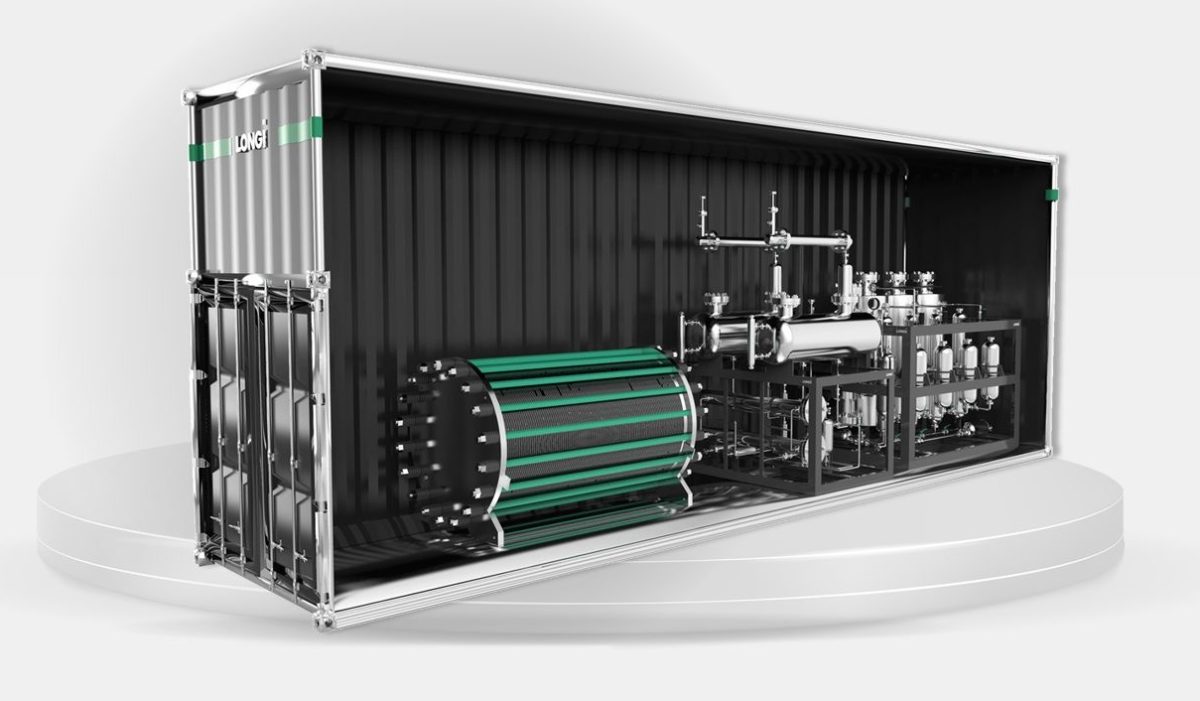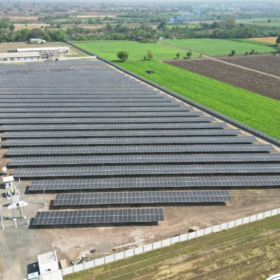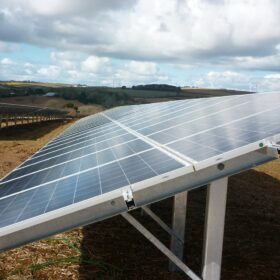From pv magazine Global
Longi Green Energy, the world’s largest solar panel producer, has been instrumental in driving solar to become the “cheapest energy in history,” according to the International Energy Agency. The company is now joining a wide field of competitors as it sets its sights on hydrogen electrolyzers.
Looking at the confluence of technological breakthroughs and rapidly growing investments in hydrogen, one cannot help but wonder if the price of the world’s lightest energy storage medium might soon collapse, much like the price of solar cells. BloombergNEF’s hydrogen market outlook recently published a chart showing what looks to be the beginning of a dramatic S-curve. Remember – everyone underestimates the rate of change.
Longi expects to have 85 GW of solar module assembly capacity built by the end of the year. pv magazine USA briefly conversed with Longi at RE+, where we asked the company about their green hydrogen plans.
The company has launched three electrolyzer models. At the company’s booth it was suggested that the 5 MW alkaline water electrolytic bath – the LHy-A1000 – was the most efficient of the three models. The unit generates approximately 90 kg of hydrogen per hour.
Longi stated that it hopes to expand its Wuxi manufacturing facility to 1.5 GW by the end of 2022, and to produce 5 GW to 10 GW of electrolyzers by 2025. These targets imply a growth of multiple gigawatts per year.
The company began thinking hard about hydrogen in 2018, as wind and solar prices plummeted, and renewables expanded massively across China. Since electricity comprises 60% of the cost of producing hydrogen, excess solar was thought to be the perfect partner.
Meanwhile demand for net zero industrial processes has been looming. Longi cited some of the key industries: cement, fertilizer, and oil refinement.
At its booth, pv magazine USA pried for pricing data for Longi’s electrolyzers, asking whether they were below $1,000/kW. The company replied that their products cost less than $500 per kW. Bloomberg NEF recently reported that alkaline electrolyzers produced by an unnamed Chinese manufacturer were less than one-third the price of those manufactured in the United States, at only $343/kW.
Because Longi is the largest producer of electrolyzers, it is likely to be the manufacturer of the $343 electrolyzer. However, since six companies are already producing more than 1 GW of capacity each year (per the chart, below), we’re not sure who is leading these cost reductions.
Bloomberg NEF’s analysis also predicts that we should expect an additional 30% reduction in costs due to scaling by 2025. However, some of those gains will be offset by increases to the price of labor and commodities.
This scaling process is still in its early stages, so it is still very likely that the 20% price decrease, associated with each doubling of capacity, should greatly outpace the relatively small increases to labor pricing that can be expected. External forces are playing a strong role in these developments, too. The US Inflation Reduction Act pays $3/kg for green hydrogen. And as other forces cause energy pains, like the war in Ukraine, it appears likely that manufacturers will find new markets for these components.
This content is protected by copyright and may not be reused. If you want to cooperate with us and would like to reuse some of our content, please contact: editors@pv-magazine.com.








By submitting this form you agree to pv magazine using your data for the purposes of publishing your comment.
Your personal data will only be disclosed or otherwise transmitted to third parties for the purposes of spam filtering or if this is necessary for technical maintenance of the website. Any other transfer to third parties will not take place unless this is justified on the basis of applicable data protection regulations or if pv magazine is legally obliged to do so.
You may revoke this consent at any time with effect for the future, in which case your personal data will be deleted immediately. Otherwise, your data will be deleted if pv magazine has processed your request or the purpose of data storage is fulfilled.
Further information on data privacy can be found in our Data Protection Policy.